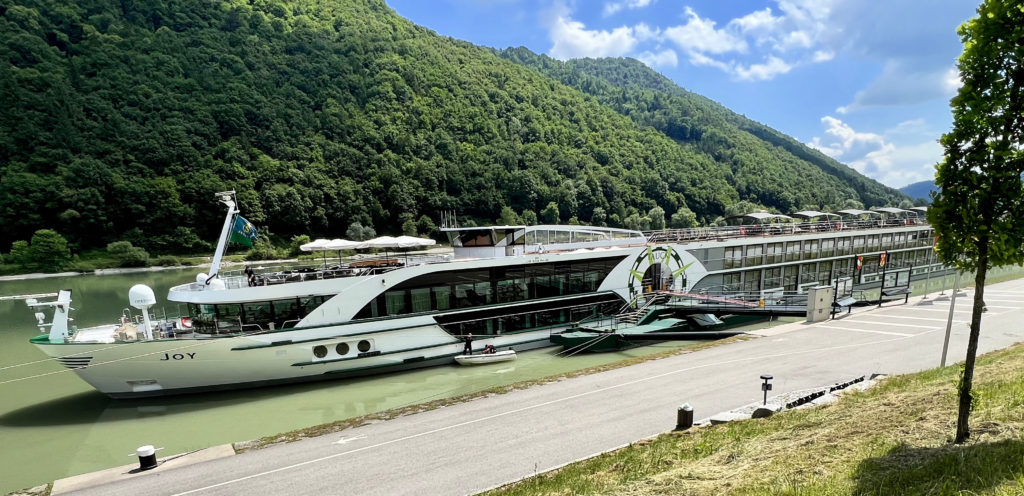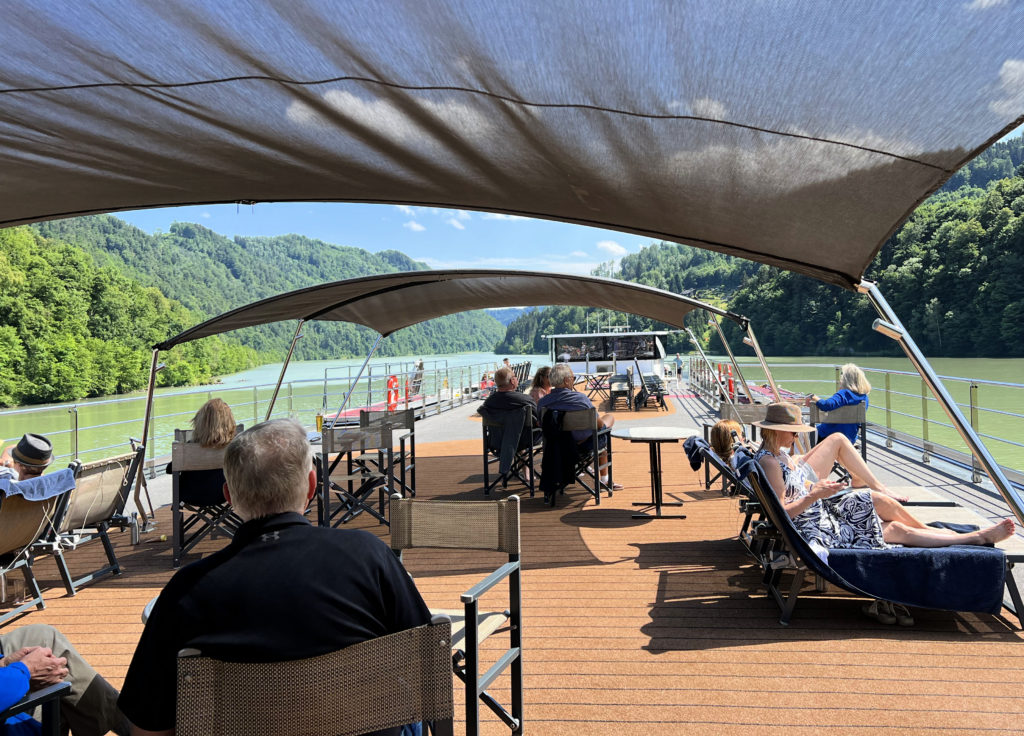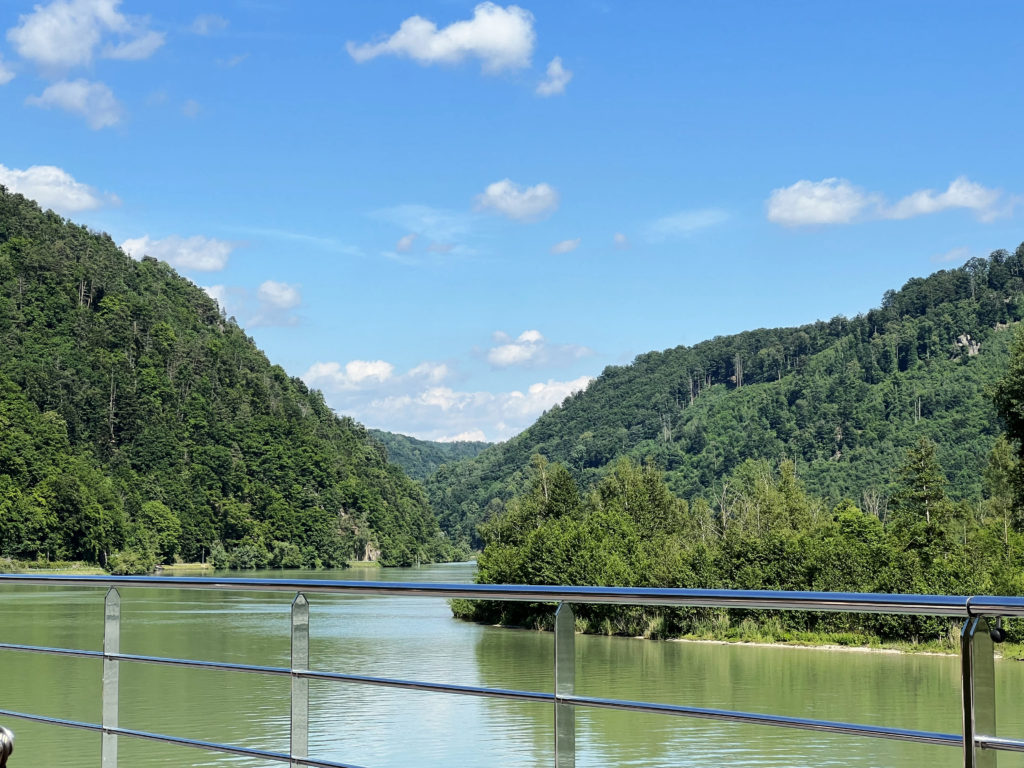
Engelhartszell, Austria
The day following the Passion Play, we travelled to Vilshofen, Germany to board our ship. On the way, we stopped for lunch in Landshut. It was founded in 1204 when the Duke of Bavaria built a fortress here. Today it is the capital of Lower Bavaria. These pictures are of the Gasthaus Zur Schleuse’s beer garden where we had our lunch and a view along the Isar River, just across the street from the restaurant.
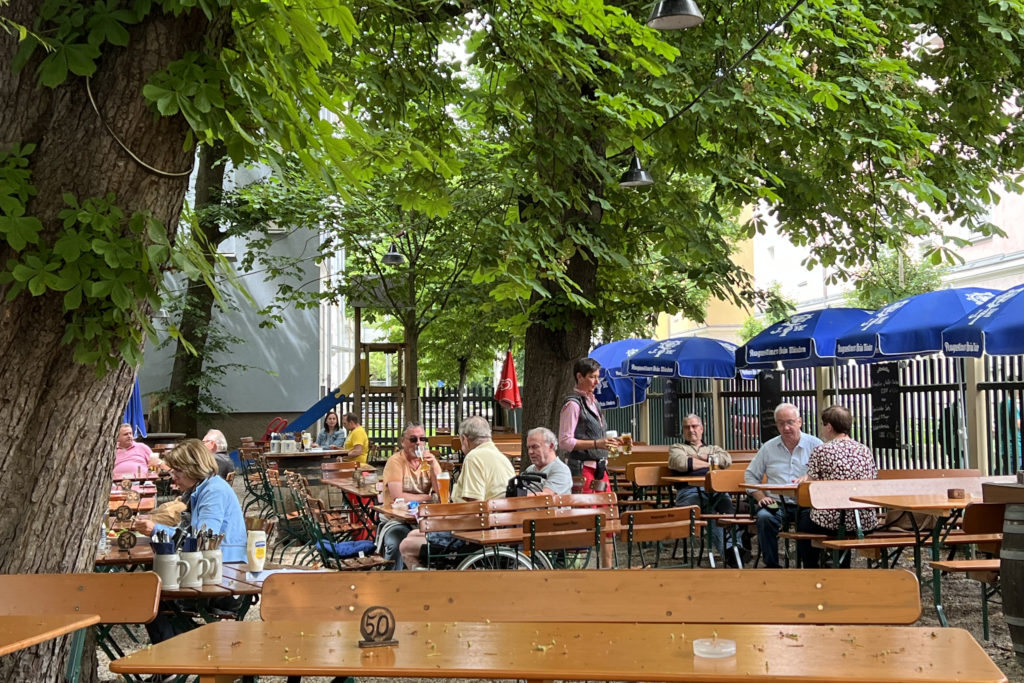
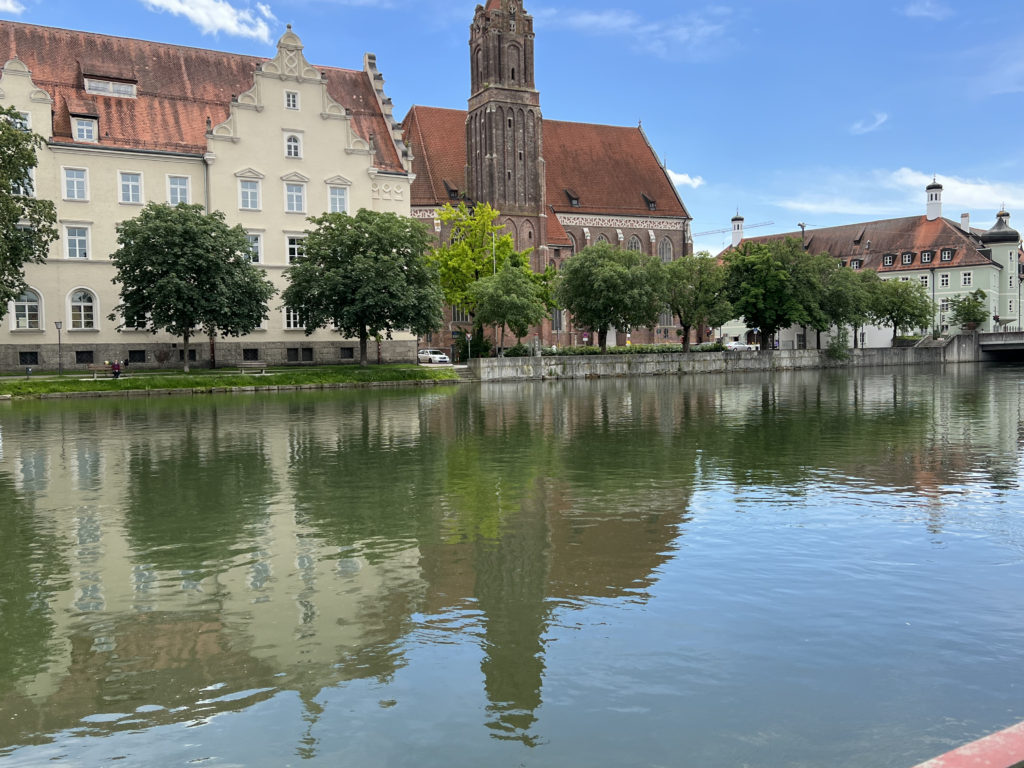
Our first port of call was Engelhartszell, Austria. Here we visited the Engelszell Abbey, the only Trappist monastery in Austria. The monks live secluded lives, focused on prayer, reading and physical work. They meet six times each day for the Liturgy of the Hours. These are devotions that help them focus on God. Each monk is also required to contribute to the livelihood of the monastery. Their physical work is intended to provide balance with their spiritual lives and helps to maintain the operation of the monastery.
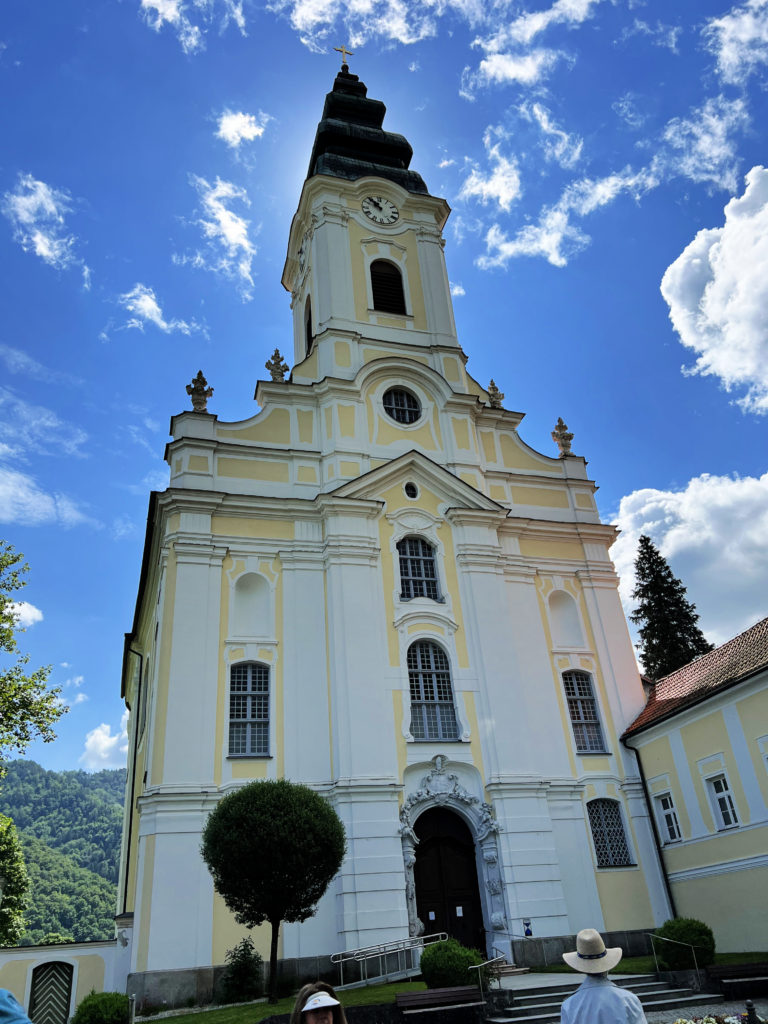
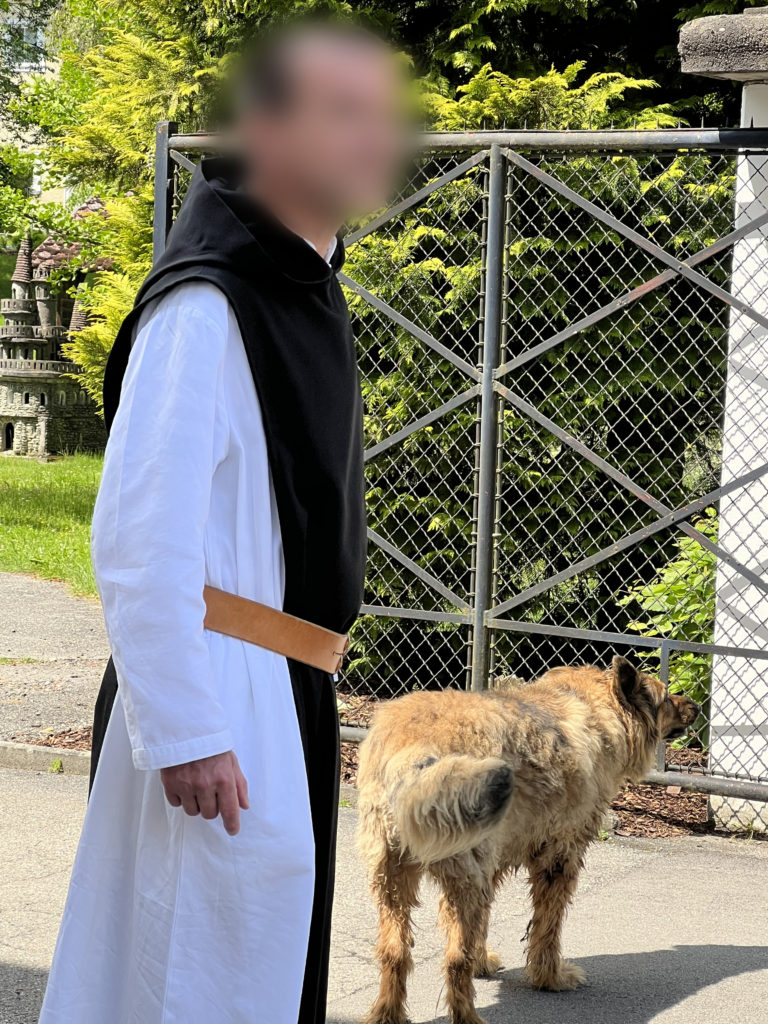
Before going into the Abbey Church, we walked through the monastery’s gardens and orchards. Within the gardens is a model of the Danube and its locks. There is also a small aquarium on site with the kind of fish that inhabit the Danube, including large sturgeon.
One of the monks’ means of support is agriculture. They are also known for their liqueurs, cheese and Trappist beer. They began brewing beer in 2012 and the monastery is the only place Trappist beer is brewed in Austria. It must be brewed by monks or under their supervision. Sale of the beer supports the monastery and charities.

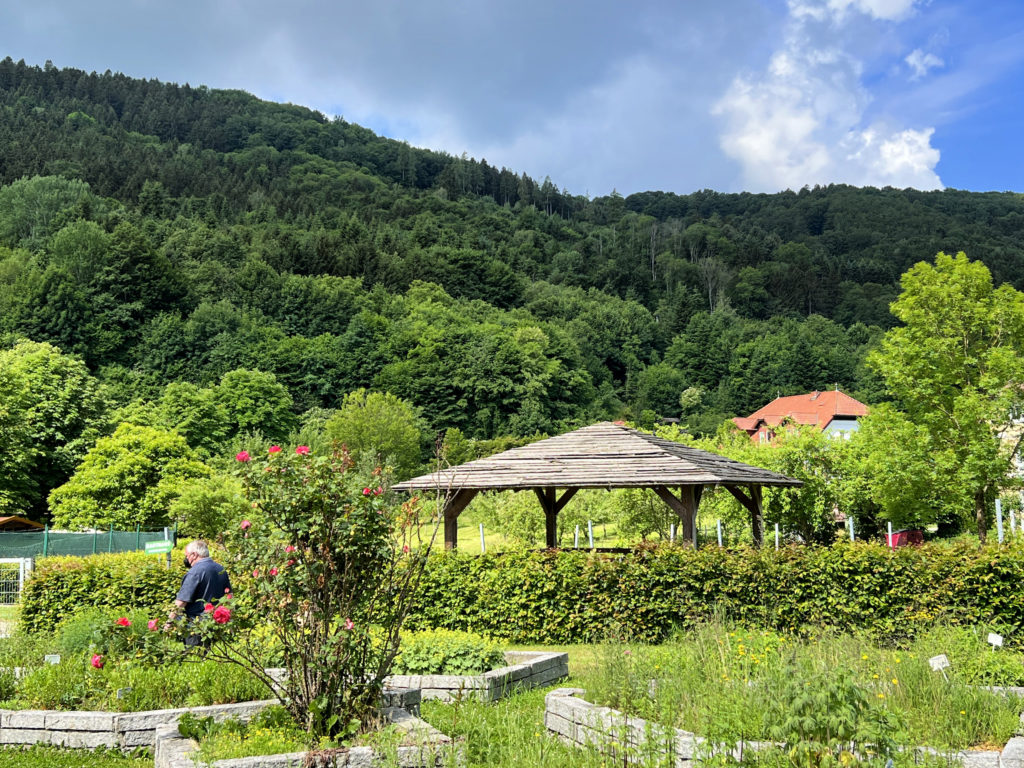
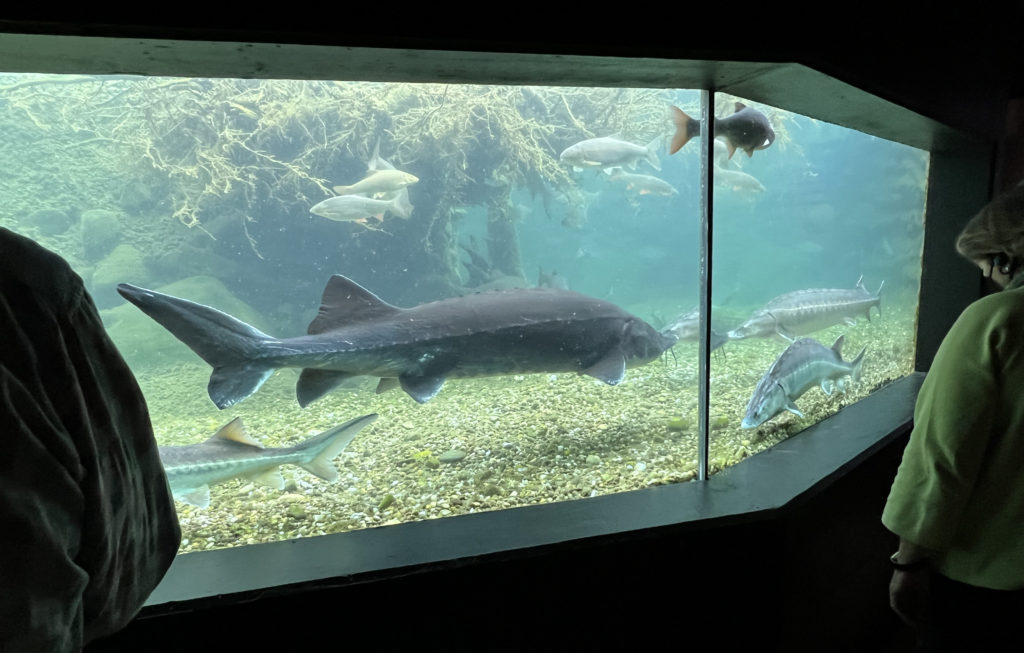
Engelszell Abbey was founded in 1293. It has had a rough past, being suppressed by Holy Roman Emperor Joseph II in 1786, resulting in their assets being confiscated by the government. It was taken over by another monastery in 1925 but then confiscated by the German Gestapo in 1939. Many of the monks in the monastery at the time were imprisoned in concentration camps. In 1945, some of the monks were able to return to the monastery and were joined by German Trappists.
The present Abbey Church was constructed between 1754 and 1764. Its tower is almost 250 feet tall. The high altar is decorated with a beautiful altarpiece, statues and red marble. Both the altarpiece and dome were painted by Bartolomeo Altomonte (1694-1783) who is best known for his large frescoes. The grave monument (last picture in this section) has a gothic relief and dates back to 1508.
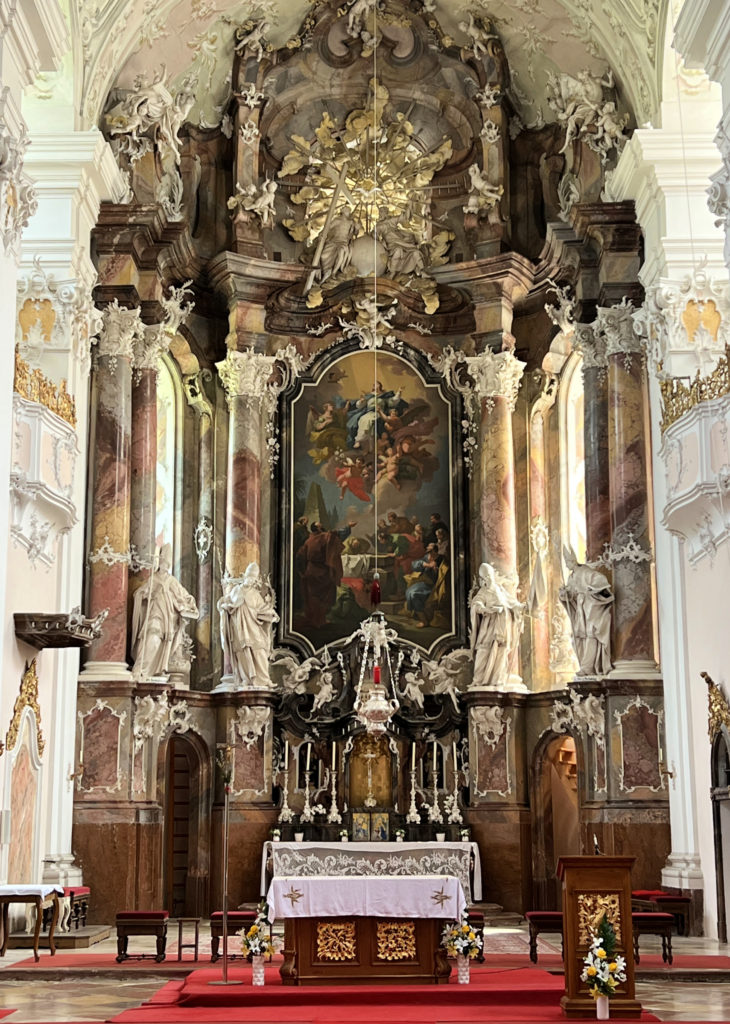
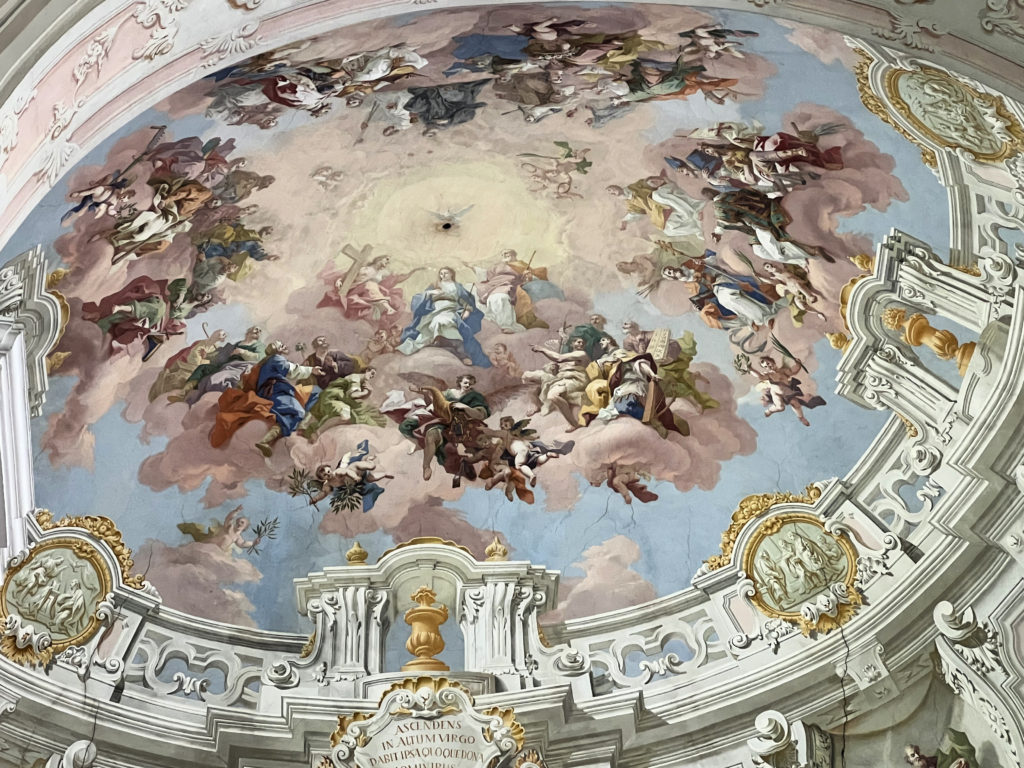
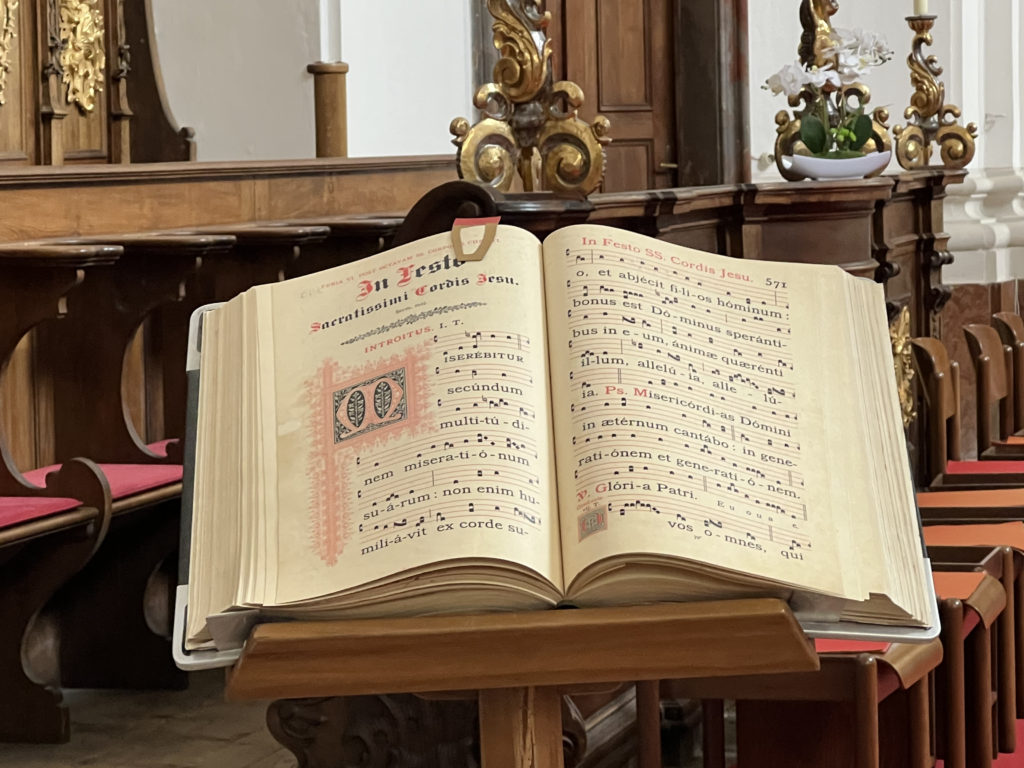
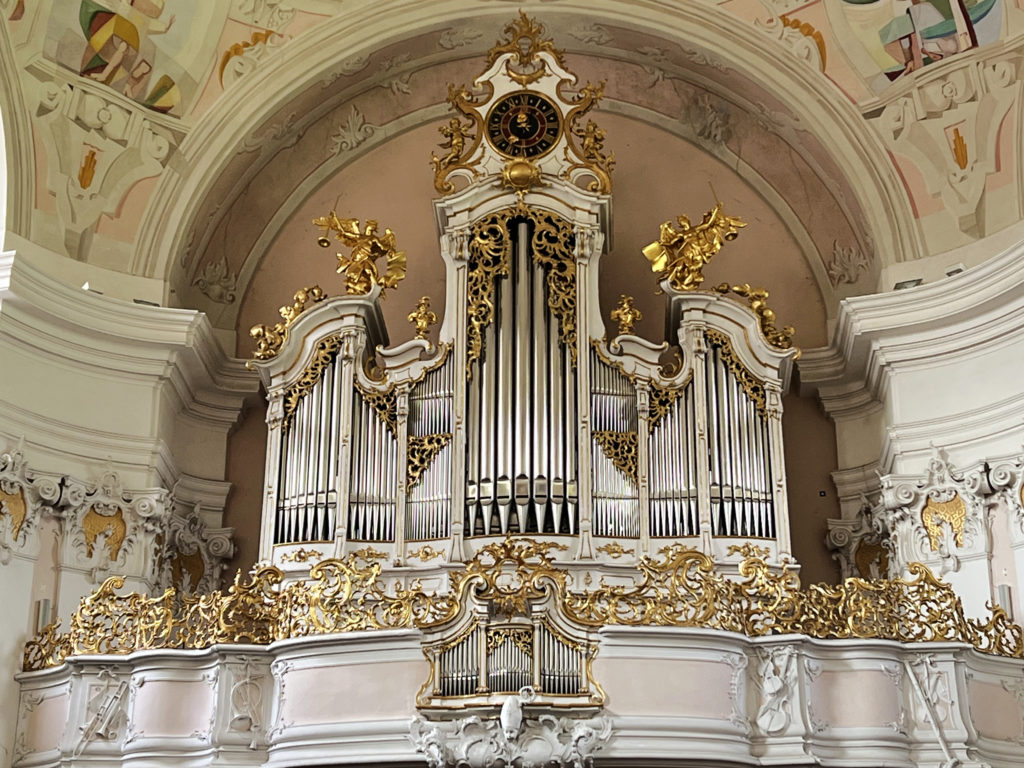
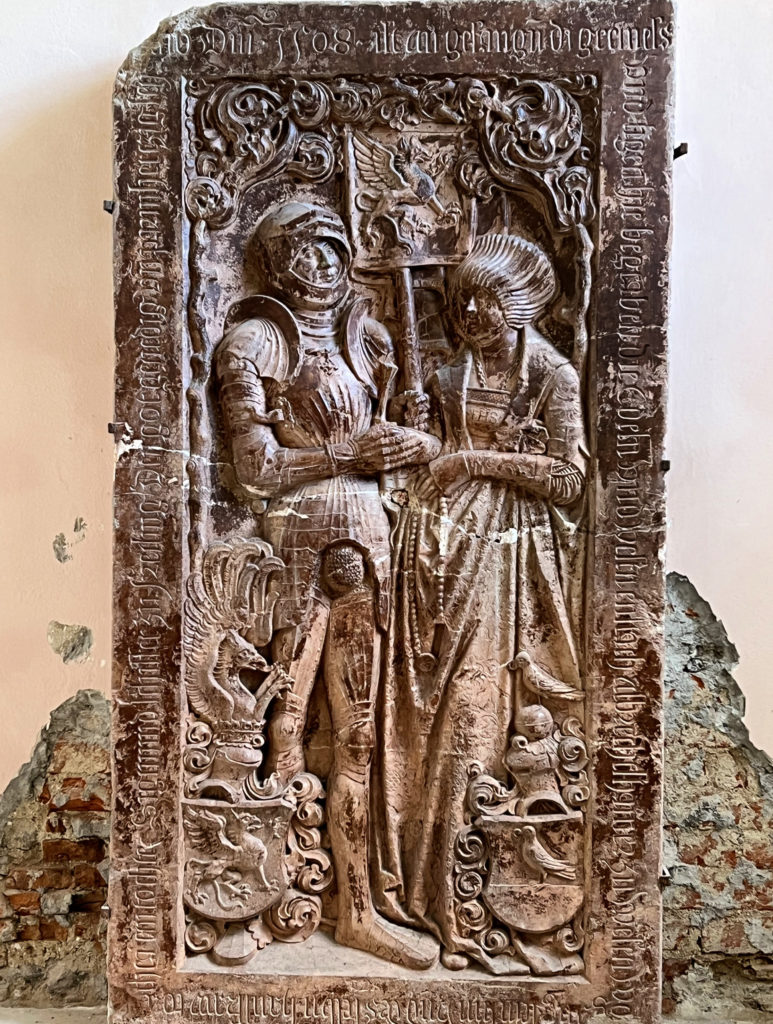
The Engelszell Abbey Church is a beautiful church, but certainly one of the more interesting things we saw were skeletons in glass cases in the chapels along the sides of the church. They are known as Catacomb Saints and their relaxed poses and jewels are meant to symbolize the “glory of the afterlife.” The Catacomb Saints are skeletons that were found in catacombs in Rome in 1578. They date back to the first three centuries of Christianity and some are believed to be the remains/relics of early Christian martyrs. After the skeletons were recovered, jewelry was sown on to fine mesh which was then used to adorn the skeletons. Nuns or monks typically did this work. Often the skeletons and jewels were gifted to a church by someone with wealth and/or fame. Since that time, their authenticity has come under question and many have now been placed in storage or destroyed. Though we could still view those enshrined in the Engelszell Abbey, they were not even mentioned by the guide sharing information about the Abbey. Printed below is part of a CNN story about the Catacomb Saints. If this interests you, check out the website credited with the quote to see additional pictures.
When archaeologists unlocked the catacombs of Rome in 1578, they unleashed a wave of religious fervor. Catholic officials disinterred skeletal remains, which they assumed to be early Christian martyrs, and had artisans reassemble them. Encrusted with gold and jewels, the skeletons then went on display in lavish shrines across Europe to convey the glory that awaited the Church’s devout followers in the afterlife. But by the early 19th century their saintly authenticity came into question and, in a dramatic reversal of fortune, many of the relics were hidden from view or destroyed.
http://www.cnn.com/style/gallery/beauty-from-the-crypt/index.html?gallery=%2F%2Fcdn.cnn.com%2Fcnnnext%2Fdam%2Fassets%2F131204144904-st-valerius-heavenly-bodies.jpg
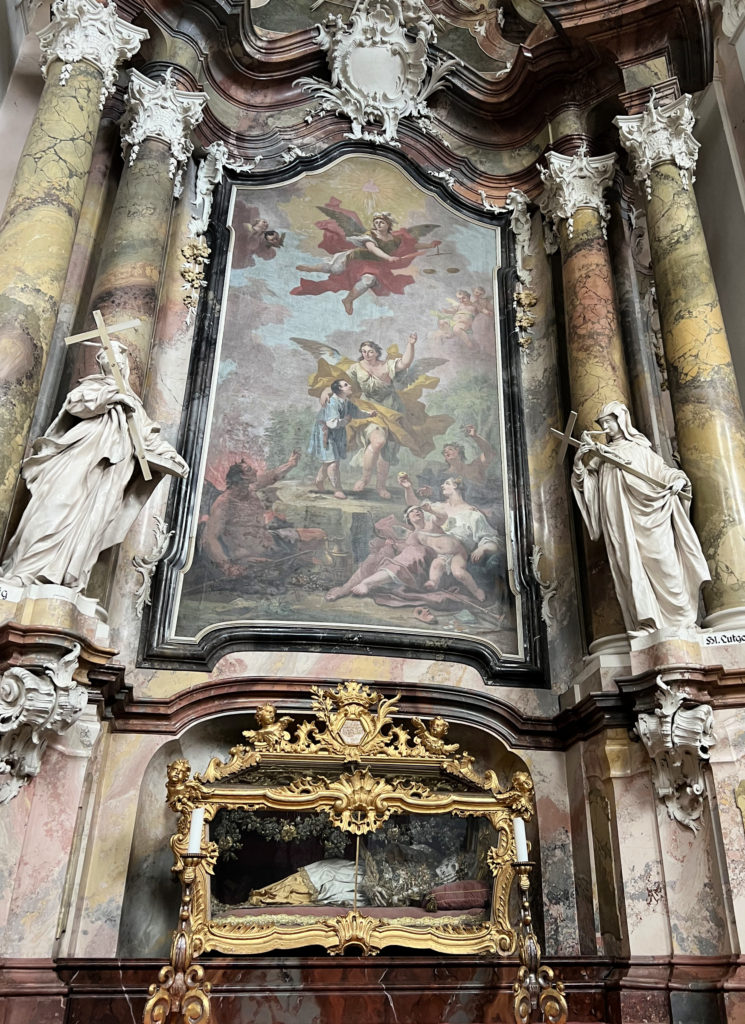
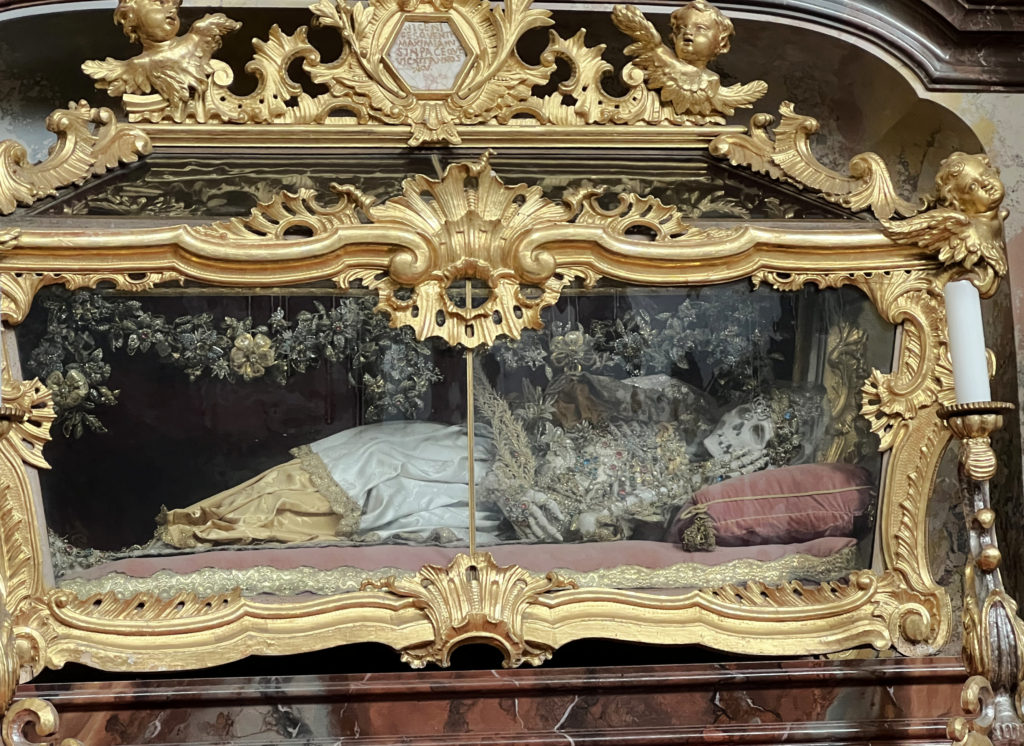
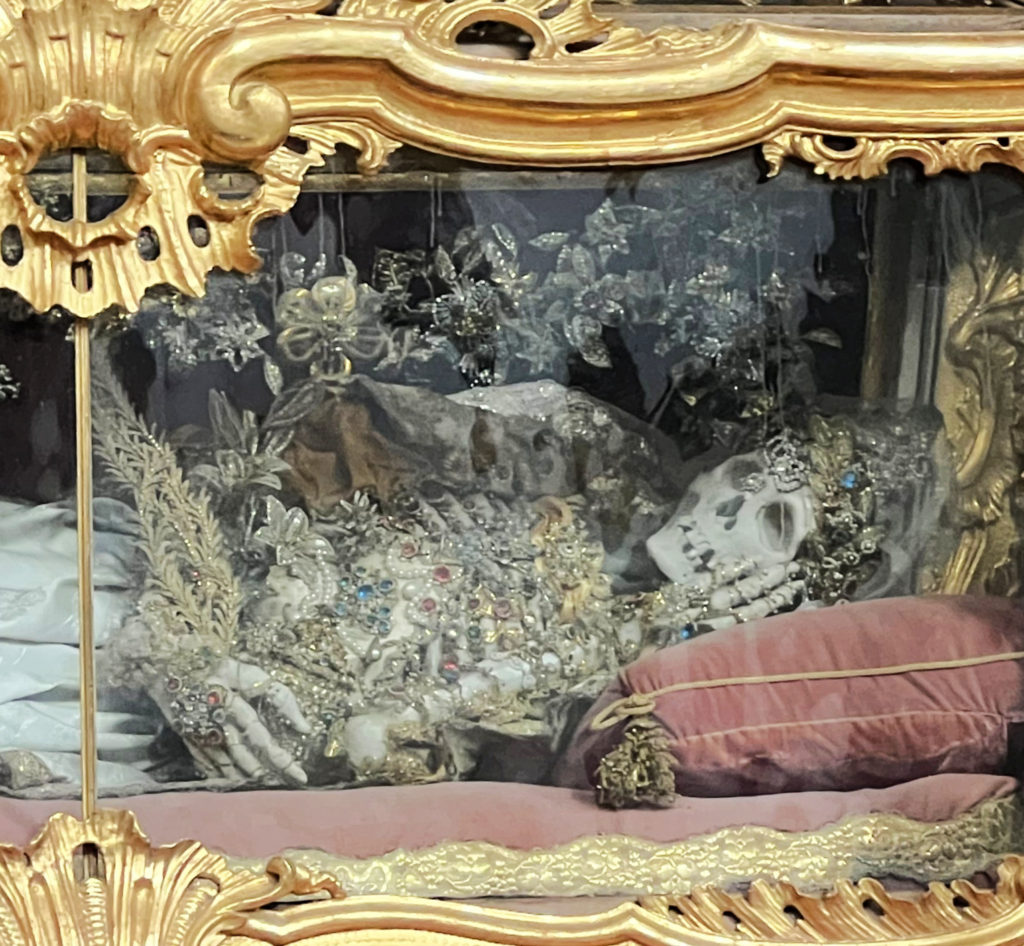
Our riverboat, the MS Joy, was docked within walking distance of the Abbey so we walked back to the ship. After lunch we went up to the sun deck as we cruised on to our next port.
